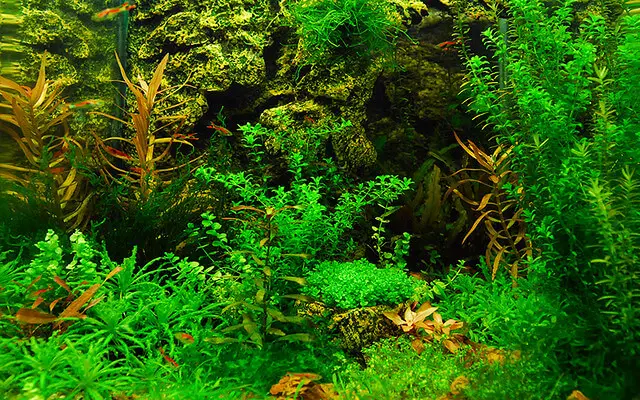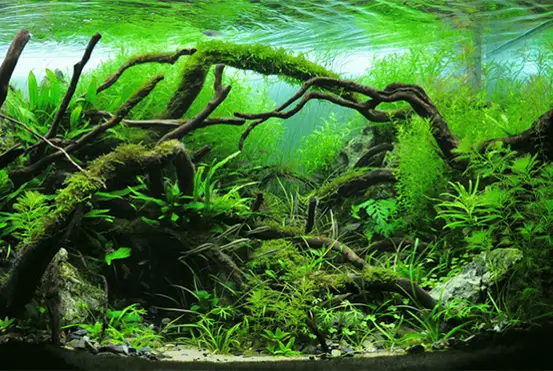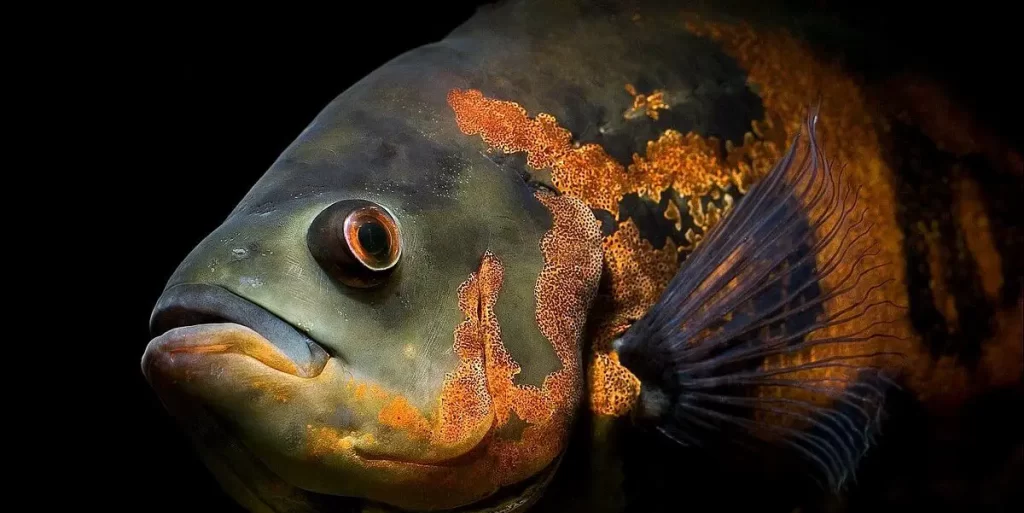It is most likely that you have seen the adorable small aquariums that make you feel like buying them. Fear not, because these aquariums can fit almost anywhere, be it home or office. So, in today’s article, we will be looking into nano planted aquarium set up and do’s and dont’s on the nano aquarium.
To be honest, setting up a nano planted aquarium is not a child’s play. But it can be so much easier if you have guidance. All you need to know is the equipment requirements, the type of plants you want to include and how to maintain your nano tank.
Today, I will guide you in detail on how a nano planted aquarium can be set up step by step. Let’s first understand what nano aquariums are all about.
What are Nano Aquariums?
Nano aquariums are generally the smaller versions of fish tanks equipped with filters (internal or external) specially designed for their size. These low weight small tanks can be placed wherever you like and can be used for the purpose of fish keeping as well as planting.
Nano aquariums can be categorized into freshwater or saltwater. It is focused on having small-sized inhabitance.
Nano tanks can include inhabitants like shrimps and snails. Some small-sized fish can also be included in the tank. The small capacity aquariums (usually less than 10 gallons capacities) are what are known as ‘Pico Nano Tanks’. These tanks are more focused on having only plant-based systems with no filters nor live inhabitants.
So, what is a nano planted aquarium?
A nano planted aquarium set up is the process of creating a natural habitat adding live plants to your aquarium. It is a unique, budget-friendly natural aquatic ecosystem that you can create for your home.
A nano aquarium contains selected aquatic plants and fish as they are very small in size.
Read the article on the Fish tank set up for a beginner.
Why Should You go for a Nano Tank?
For a breeze of nature to the sore eyes, nano tanks are the most ideal tanks to have in your space as an aquarist. Over time, nano tanks have gained so much popularity that you can easily find access to complete quality products from your set-up to the maintenance.
Nano tanks are much affordable as they consume less substrate, water, equipment, and even fewer chemical elements.
Moreover, you can find a wide variety of LED friendly flora where different specimen can be grown given that sufficient nutrients are provided.
Disadvantages of Having a Nano Tank
But with such advancements come some difficulties. Nano tanks are high maintenance than large tanks since smaller tanks have lower water parameter stability. This means you need to have frequent water changes and give more attention.
On the other hand, it can accommodate only small-sized creatures. So, an aqua-gardener may be the term you are looking for. You cannot add fish that you think you can add. You will need to be extra careful when adding fish in your nano planted aquarium set up.
Nano Planted Aquarium Checklist
For any nano planted aquarium, be it saltwater or freshwater, you need a proper setup. The common basic equipment you need to have for the “low tech” approach of the aquarium are:
Aquarium
A container is the base element to set up a nano planted tank. Equipped aquariums for a nano ecosystem are also available as full kits
Containers are found in different shapes, sizes, and weights. Nano planted tanks are usually lighter in weight and can fit in a small space. The way you scape your aquarium will depend on the dimensions of your tank. Your tank and be wide or tall or even as you want to customize it.
Water
Your nano-tank can thrive in dry set up as well. However, water is the basic need for any plant. Either tap-water or purified water will be the basic requirement for your nano-tank.
You need to decide on the type of water you will use in your miniature eco-system. Maintaining pH and water hardness level is very crucial. It is very handy to keep a water testing kit aside for this purpose.
Substrate
Many brands of quality substrates are easily found in the market composed of chemical compounds. Nano-tank bases can be set up using sand, gravel stone, and soil.
Usually planted tanks should be fed with soil-based substrates with enough nutrients. Fertilizer capsules can also be used for certain plants according to the necessity.
Filter
It is equally important to have a clean and green ambiance both inside and outside of your nano tank. Nano tanks depend on biological filters which convert bacteria into fewer toxins. The live plants produce oxygen in the water which in turn is cycled by other inhabitants.
Plants
A planted nano tank can create a feel that no other tank can. Planted nano-tanks are very efficient with minimal requirements. There are different species of plants you can refer to. Also, the reef tanks can also add value to your nano scape.
Lighting
The key concept of lighting is simple. Your source can be an LED light or a fluorescent bulb. The light produced is consumed by the plants which activate the photosynthesis process. However, the intensity of the light can vary according to the depth of your tank. So, if your tank is deeper, then you might require a light with more capacity.
Fertilizer
Having a fertilizer is of the utmost importance ina planted nao tank. This is because plants require nutrients and minerals, which often might not be sufficient with just the water you have in your tank. For this purpose, a nano tank fertilizer can be in the form of capsuled balls or liquid. The plant type, size, and growth along with its roots will determine how much of fertilizer it may require or not.
CO2 and CO2 Diffuser
Carbon dioxide is intaken by plants just as we humans intake oxygen. A Co2 and carbon dioxide diffuser is absolutely necessary for a plant-based nano tank. The CO2 diffuser performs the diffusion process where carbon dioxide is mixed with water such that the plants can intake it. Regular water changes result in the loss of diffused water. Therefore, having the Co2 generator/canister that stores co2 and CO2 diffuser working is necessary to create a balanced environment.
Read the full article on the freshwater aquarium equipment checklist.
Steps to Set up a Nano Planted Tank
Setting up embarks the beginning of your nano tank journey. For convenience, it is always better to place your items that go in the tank near. Follow the steps below to achieve a successfully planted nano-tank.
Figure out the aquarium placement
This includes finding a proper space for your nano tank.
- Natural light can cause algae growth in any tank. So, keep in mind that the tank needs to be in a more darker and cooler space away from sunlight.
- The location of the tank should also match the size of the tank.
Cleaning Beforehand
Before you start scaping your aquarium, it is necessary to have your tank clean.
- To remove any dirt and other particles, consider using lukewarm water added with vinegar and wiping the aquarium inside out thoroughly.
- With this, it is important to clean your center-piece by boiling and sterilizing the item beforehand.
- After this, you need your centerpiece to be soaked in water for 24 hours at the least before use.
Adjusting the Lighting
Certain Nano tank kits come equipped with all the necessary items. The lighting is usually placed on top of the tank.
- For a planted Nano tank, lighting is the most important factor. A low to medium lighting will be effective for most live plants. However, having lighting with more sources is much effective than bulbs with more output.
- Adding the lights before you start your scaping helps you get a clearer view of what you are going to deal with next.
Substrate Choice and Placement of Centerpiece
The substrate used for a nano planted tank is usually the combination of a 20% finer grain and rest can be normal grains or even sand. Having aquarium fertilizer helps the plant to have a mineral enriched environment to grow in.
- Add in the fertilizer first. After this, add the normal soil-based substrate to your tank to one-inch depth.
- Create an inclination to give the effect of depth.
- Place your sterile center-piece in the tank on top of the normal substrate and adjust it. The center-piece can be either a plant itself or a hard item like rocks and clay pots.
- Carefully pour in the top layer of the fine soil-based substrate on top. Make adjustments accordingly to match your concept. Adding a finer substrate is completely optional.
Moist Your Soil/Substrate
A good substrate has water softening properties. Whereby the soil increases the alkalinity of the water when moist, necessary for most plants.
- After the placement of the substrate and the centerpiece, you need to keep your soil moist. Moisture really helps in what comes next. Moistening the soil will keep your plants from drying up when you scape your aquarium.
- Also, keep moistening the soil at certain intervals of time to ensure that the fauna is not disturbed.
Aquascaping your Fauna
Aquascaping is known as ‘ gardening underwater’. It is the art of organizing the aquatic live plants and the hard items such that the outcome to match your level of visually appealingness.
- Each aquarium is unique and has its own individuality. The same applies to the nano planted tanks as you can place the pants and adjust your centerpiece accordingly.
- Here, use the sterile equipment (tweezers) to place your choice of plants.
- You can even place small and proportion of plants in the nooks and crannies with a little soil.
Carbon Dioxide Diffuser Equipment
For generating CO2, canisters or even homemade yeast reactors can be used. Micro-sized canisters are comparatively expensive for their size, but they are worth the price.
- Add the CO2 diffuser to the tank.
- Make sure to provide the element in a proper dosage.
Filling the Tank With Water
The next step is adding the water. For this, you need to use a specific method.
- Place a polythene bag or paper on top of the soil.
- Pour water onto your hand such that it falls on the paper surface.
- This is done so as to prevent the displacement of soil as well as not affect the newly planted specimen.
Add the filter (optional for certain cases)
Filters are not an absolute necessity in the nano tank. But, it will depend upon your choice of fauna.
- Insert an external or internal biological media in your tank.
- Adding some small species like prawn, shrimps, and snails can help keep the ecosystem clean.
With these steps, setting up a nano planted tank has never been much easier.
What Plants Can I Add in my Nano Planted Aquarium Set up?
While choosing the plants for your nano-tank, you need to take into consideration the care level, growth rate, lighting, and water conditions for your plants.
A wide variety of plants are available in the market for nano tanks. You can definitely use plants that are locally available like moss and grass. Some suggestions are the Anubias nana, Dwarf hair grass, Cryptocoryne wendtii ‘green’, Staurogyne repens and the Pogostemon helferi.
These plants are suited well for any planted nano tank.
What Inhabitants can you Add to your Nano Planted Tank?
Having an inhabitance in your planted nano tank can help your tank stay cleaner. It is because certain species thrive on such algae and build-ups.
Usually, fishes that are not active and small in size need to be considered because the tank is small and planted. You can include breeds like tetras, bettas, goby, and livebearers in your tank.
Other inhabitants that can do well in your planted nano tanks are shrimps, small crabs, and even snails. You need to make sure that you make the right choice for inhabitance such that both flora and fauna are compatible with the ecosystem.
How to Clean Your Nano Planted Aquarium?
Yes, it is necessary to clean your nano tank. Cleaning a soil-based planted tank which nano in size, can be quiet a hassle. You need to carefully follow a certain number of steps to do so.
- Start by turning off your filter as well as the heater.
- Remove the floating plants if any.
- Place your inhabitants in a separate tank.
- Remove the centerpiece and the filter and clean it thoroughly.
- You can use a blade or a sponge to clean the walls of your nano tank.
- Trim the excess growth and then vacuum the water and fill it back up.
Now, you can place all your items as well as inhabitants in the step-by-step process as mentioned above.
Conclusion
Nano-planted tanks are easy to set up. They, however, need to be maintained and require more attention and frequent water changes.
I hope this article was able to give you an overall view of nano-tanks and how to set up and increase your miniature underwater gardening skills.






